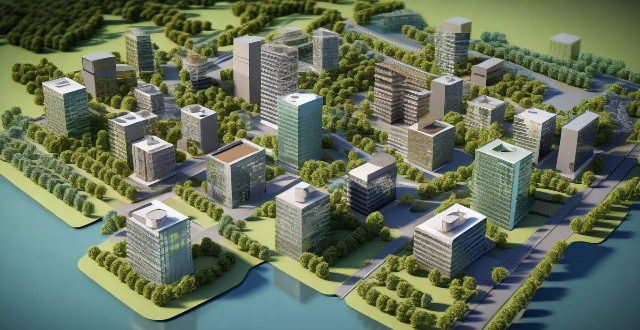Urban greening projects offer a multitude of benefits including improved air quality, climate regulation, water management, enhanced aesthetics and livability, mental and physical health improvements, community building, habitat creation and preservation, food production, job creation, energy conservation, and tourism attraction. These initiatives aim to increase the amount of greenery in cities, such as parks, gardens, green roofs, walls, street trees, and other forms of urban forestry. The advantages of urban greening are multifaceted and contribute significantly to the improvement of urban environments for both residents and wildlife.

Benefits of Urban Greening Projects
Urban greening projects refer to the creation, preservation, and enhancement of vegetated spaces within urban areas. These initiatives aim to increase the amount of greenery in cities, including parks, gardens, green roofs, and walls, as well as street trees and other forms of urban forestry. The benefits of urban greening are multifaceted and contribute significantly to the improvement of urban environments for both residents and wildlife. Here are some key advantages:
Environmental Benefits
Improved Air Quality
- Urban green spaces act as natural air filters by absorbing pollutants and releasing oxygen.
- Trees and plants can trap particulate matter and reduce levels of harmful gases like carbon monoxide and sulfur dioxide.
Climate Regulation
- Vegetation helps to moderate urban heat island effects by providing shade and evaporative cooling.
- Plants also sequester carbon, helping to mitigate the impacts of climate change.
Water Management
- Green infrastructure such as rain gardens and permeable pavements can help manage stormwater runoff.
- They reduce the risk of flooding by absorbing and filtering water before it enters sewer systems.
Social and Health Benefits
Enhanced Aesthetics and Livability
- Green spaces provide aesthetic value and a more pleasant living environment.
- Well-maintained parks and gardens can increase property values and attract tourism.
Mental and Physical Health Improvements
- Access to nature has been linked to reduced stress, anxiety, and depression.
- Green spaces encourage physical activity, which can lead to better health outcomes.
Community Building
- Public parks and gardens offer venues for community events and social interactions.
- Urban greening can foster a sense of civic pride and community ownership.
Ecological Benefits
Habitat Creation and Preservation
- Green spaces provide habitats for a variety of species, promoting biodiversity.
- Connectivity between green areas allows for the movement of wildlife and gene flow.
Food Production
- Urban agriculture initiatives like community gardens can provide fresh produce for city dwellers.
- They also educate the public about sustainable food systems and nutrition.
Economic Benefits
Job Creation
- Greening projects require labor for planting, maintenance, and management.
- They can create jobs in horticulture, landscaping, and environmental management.
Energy Conservation
- Shade from trees can reduce the need for air conditioning, lowering energy consumption in buildings.
- Green roofs can insulate buildings, reducing heating and cooling needs.
Tourism Attraction
- Beautiful and unique urban green spaces can draw visitors, boosting local economies.
- Eco-tourism can be a selling point for environmentally conscious travelers.
In conclusion, urban greening projects bring about a wide array of benefits that touch on environmental, social, health, ecological, and economic aspects. By integrating more green spaces into our cities, we can create healthier, more livable, and sustainable urban environments.